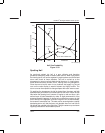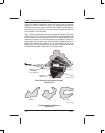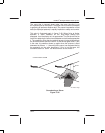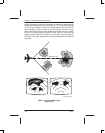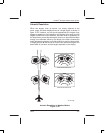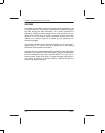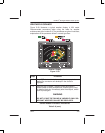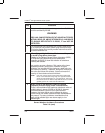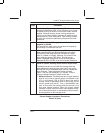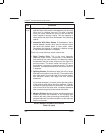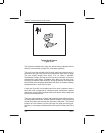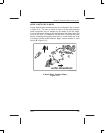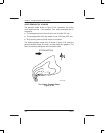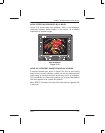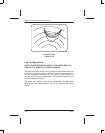
PRIMUS
R
660 Digital Weather Radar System
A28–1146–111
REV 2 5-45
Radar Facts
Step Procedure
7 Avoid all rapidly moving echoes by 20 miles.
A single thunderstorm echo, a line of echoes, or a cluster
of echoes moving 40 knots or more often contain severe
weather. Although nearby, slower moving echoes can
contain more intense aviation hazards, all rapidly moving
echoes warrant close observation. Fast moving, broken–
to solid–line echoes are particularly disruptive to aircraft
operations.
8 Avoid, the entire cell if any portion of the cell is red or
magenta by 20 NM.
The stronger the radar return, the greater the frequency
and severity of turbulence and hail.
9 Avoid all rapidly growing storms by 20 miles.
When severe storms and rapid development are evident,
the intensity of the radar return can increase by a huge
factor in a matter of minutes. Moreover, the summit of the
storm cells can grow at 7000 ft/min. The pilot cannot
expect a flightpath through such a field of strong storms
separated by 20 to 30 NM to be free of severe turbulence.
10 Avoid all storms showing erratic motion by 20 miles.
Thunderstorms tend to move with the average wind that
exists between the base and top of the cloud. Any motion
differing from this is considered erratic and can indicate the
storm is severe. There are several causes of erratic
motion. They can act individually or in concert. Three of
the most important causes of erratic motion are:
1. Moisture Source. Thunderstorms tend to grow toward a
layer of very moist air (usually south or southeast in the
U.S.) in the lowest 1500 to 5000 ft above the earth’s
surface. Moist air generates most of the energy for the
storm’s growth and activity. Thus, a thunderstorm can
tend to move with the average wind flow around it, but
also grow toward moisture. When the growth toward
moisture is rapid, the echo motion often appears erratic.
On at least one occasion, a thunderstorm echo moved in
direct opposition to the average wind!
Severe Weather Avoidance Procedures
Table 5–9 (cont)



